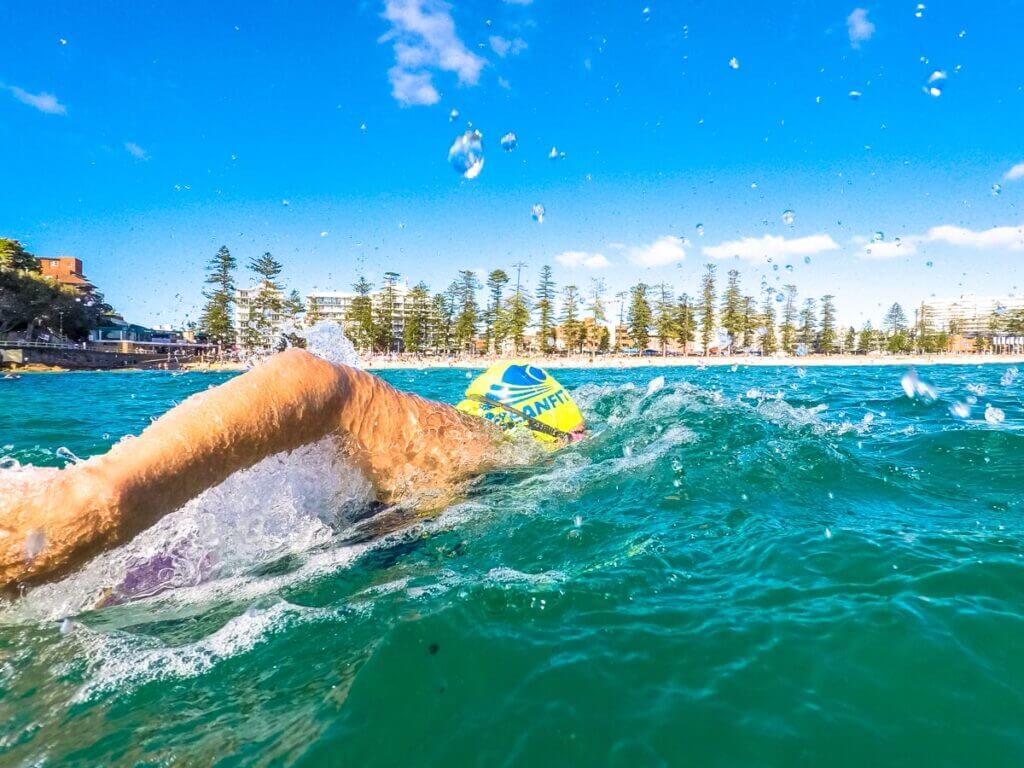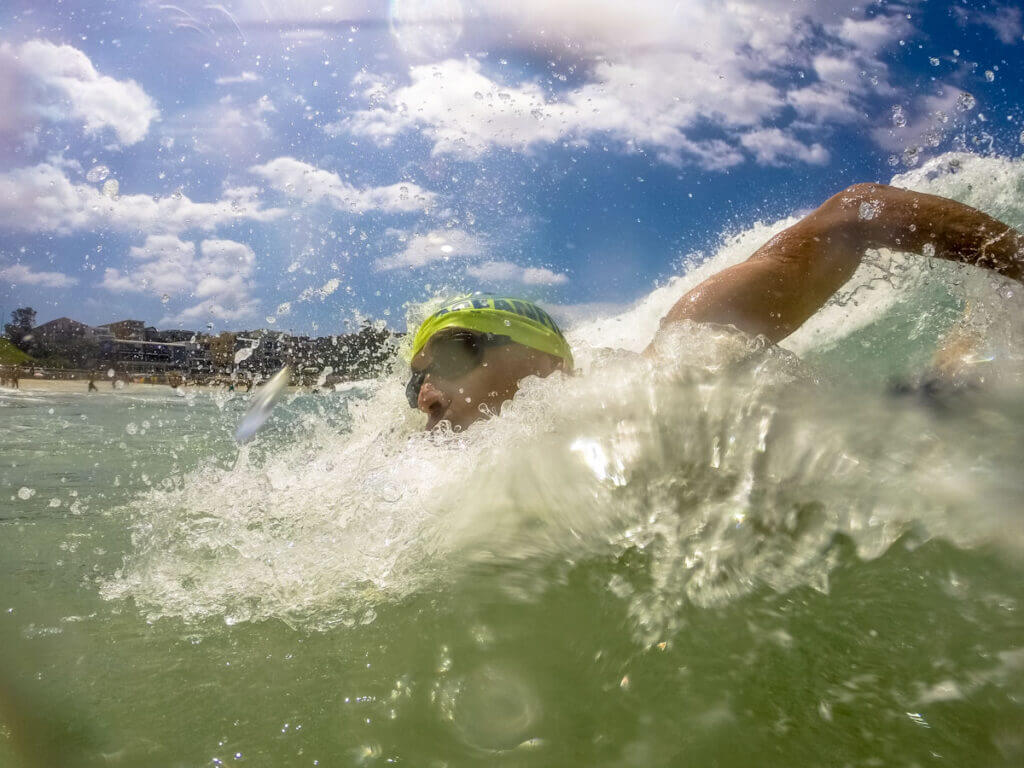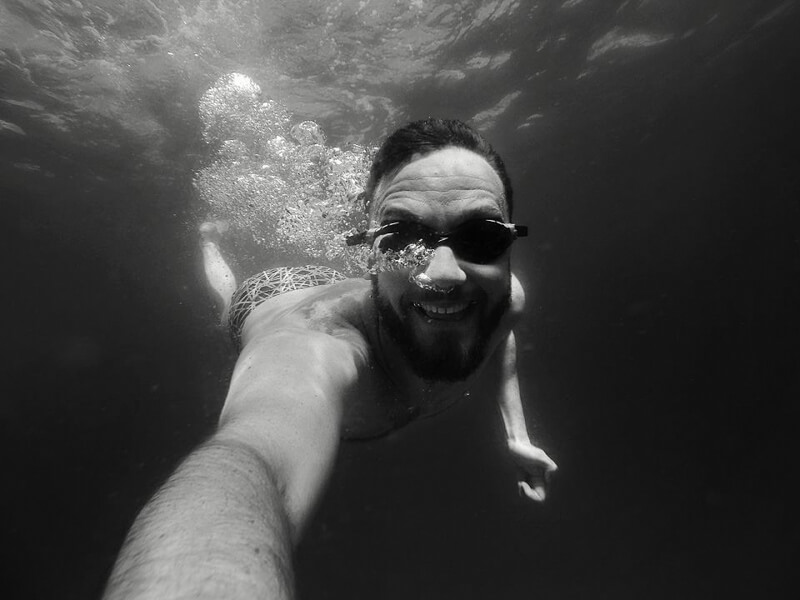Top 3 tips for returning to the shore

For many ocean swimmers, the journey back to shore through the surf generates more anxiety and concern than at any other stage of an ocean swim.
That doesn’t have to be the case though if you ride with the swell, keep an eye on the surf, and swim to the end.
To get started on your journey through the surf, first locate the sandbank and line up a landmark to keep you on track, then, use these three techniques to swim back to the beach with confidence and efficiency.
1. Ride the swell runners to the break zone
Swell are the rolling unbroken waves moving towards the beach in deep water. You’ll start to feel the swell as you round the last buoy. As the swell rolls underneath you while swimming you get a natural lift from them towards the shore. To maximize these lifts try to ‘ride’ the swell as much as possible.
To do this, get a feel for the swell as it comes underneath you and increase your stroke and kick effort to run with the swell for as long as possible. If you gain half a body length without doing anything, you might get a whole body length, or more, if you use this technique.
2. Sight behind you as you swim through the wave zone
Sighting backwards is just as important to ocean swimmers as sighting forward.
The most important reason to sight backwards is to know exactly where the waves are at all times. If you know where the waves are, and what stage of breaking they are in, you can be proactive in the action you’ll take. You can either avoid them by turning to face the wave and diving under or connect with them and swim with the wave/whitewash or bodysurf.
There are two techniques to sight backwards.
(1) Backward sighting is performed by looking back under your armpit as you take a breath. This is good for quick glimpses while maintaining speed.
(2) Backstroke sighting is performed by rolling onto your back and backstroking while lifting your head and looking back over your toes. Keep your core switched on and increase your kick rate to keep your lower body from sinking. This technique can also be used to catch your breath.
3. Once in the inshore, stand only once your hand touches the sand
This is a simple technique that helps you avoid standing up to soon and being caught too deep in the in-shore, where you either have to start swimming again (which will cost you energy getting started again) or you’ll walk inefficiently through to the shallow water.
Ideally you want to continue swimming to shore until the water depth is no deeper than your waist. From this depth you can efficiently dolphin-dive to the shallow water, wade, then run up the beach.
To use this technique, as you get closer to the shore start to stretch an arm out straight towards the sea-floor every few strokes (an outstretched arm is less than the length of your legs). If you don’t touch the sand then keep swimming. If you do touch the sand then you know it’s shallow enough to stand and dolphin-dive.






Responses